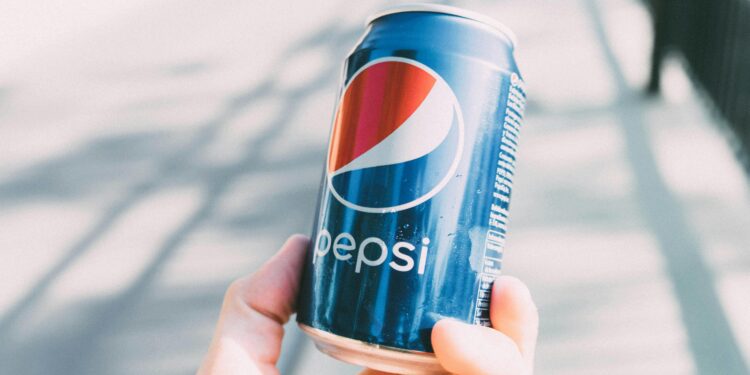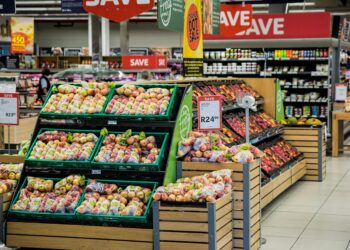Sales Fall Short of Expectations as the Company Navigates Inflation, Geopolitical Tensions, and Shifting Consumer Spending
PepsiCo (PEP) has revised its 2024 sales outlook following a challenging third quarter in which both its North American and international sales fell short of Wall Street’s expectations. The global snack and beverage giant announced on Tuesday that it now expects to achieve a low-single-digit increase in organic revenue growth for the year, down from its earlier forecast of 4% growth. This shift reflects ongoing headwinds in key markets as consumer demand weakens, particularly in North America.
The company’s stock dipped around 1% in premarket trading after the release of its quarterly results, with analysts projecting that PepsiCo may struggle to regain significant momentum in the near term.
Mixed Financial Results
Despite the disappointing sales performance, PepsiCo posted adjusted third-quarter earnings of $2.31 per share, narrowly beating the consensus estimate of $2.30. However, revenue for the quarter fell short, totaling $23.3 billion, compared to analysts’ expectations of $23.8 billion. Organic revenue growth came in at just 1.3%, a far cry from the 3.0% anticipated by Wall Street.
In light of these figures, JP Morgan analyst Andrea Teixeira expressed a cautious outlook on the stock, stating, “We believe a cut to the organic sales growth outlook and reiteration of the profit outlook was widely anticipated.” Teixeira added that while productivity gains and margin improvements may help offset some of the headwinds, North American performance remains a critical issue.
North America Struggles
PepsiCo’s North American operations were a key source of weakness during the third quarter. All three of the company’s major segments in the region — Frito-Lay, Quaker Foods, and PepsiCo Beverages — underperformed expectations. Notably, Frito-Lay’s volume declined 1.5%, a slightly better result than the anticipated 1.81% drop, but still reflective of softening consumer demand.
Chairman and CEO Ramon Laguarta attributed part of the company’s North American struggles to higher prices and consumer pushback. Speaking to Yahoo Finance, Laguarta said, “Consumers are very challenged,” adding that many are making “a lot of trade-offs” in their purchasing decisions, which has weighed particularly hard on PepsiCo’s snack business. The cumulative impacts of inflation and higher borrowing costs over the past few years have constrained consumer budgets, leading to underperformance in PepsiCo’s salty and savory snack categories.
Geopolitical and Market Pressures
Beyond North America, PepsiCo’s international performance was also affected by a variety of external factors. Rising geopolitical tensions in certain regions have disrupted business operations, further dampening sales in key international markets. In Europe, for instance, PepsiCo reported a 6% organic revenue growth, below the expected 7.45%. Latin America also saw growth of just 3%, falling short of the 4.49% forecasted by analysts.
Meanwhile, PepsiCo continues to face headwinds in emerging markets such as Africa, the Middle East, and South Asia, where inflationary pressures and economic uncertainty are hitting consumer spending patterns. Organic revenue growth in this region came in at 6%, significantly lower than the expected 11.4%.
Positive Choices and Strategic Moves
In response to shifting consumer preferences, PepsiCo is increasingly focused on expanding its portfolio of healthier snack options. The company is doubling down on its “positive choices” initiative, which emphasizes healthier alternatives like SunChips, Stacy’s, and PopCorners. PepsiCo is betting on these brands to help boost volume and mitigate some of the pressure from its core snack segments.
Additionally, PepsiCo announced a new acquisition following the end of the third quarter. The company plans to acquire Siete Foods, a Mexican-American snack and meal brand, for $1.2 billion. This move aligns with PepsiCo’s strategy to diversify its product lineup and appeal to a broader range of health-conscious consumers. Siete Foods specializes in grain-free, healthier snack options, which could help PepsiCo gain more traction in the rapidly growing natural and organic food market.
Outlook and Conclusion
Despite the setbacks in its sales growth outlook, PepsiCo remains optimistic about its ability to deliver profit growth in 2024. The company reaffirmed its expectation of at least an 8% increase in core constant currency earnings per share for the full year. Jefferies analyst Kaumil Gajrawala noted, “Management still expects to grow EPS at least 8%, impressive given 12% growth last year,” suggesting that PepsiCo’s operating model remains robust even in a challenging macroeconomic environment.
As PepsiCo continues to invest in commercial activities and brand support to stimulate consumer demand, the company’s ability to adapt to evolving market conditions will be critical in determining its performance in the coming quarters. With inflation and geopolitical tensions expected to persist, PepsiCo’s strategic moves — including its focus on healthier alternatives and key acquisitions — will likely play a pivotal role in shaping its long-term trajectory.
You might like this article:Tesla’s AI Robot Event Preview: Autonomy, Humanoids, and the Future of Robotics











